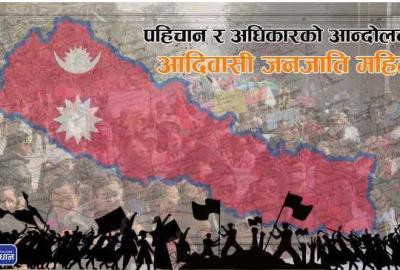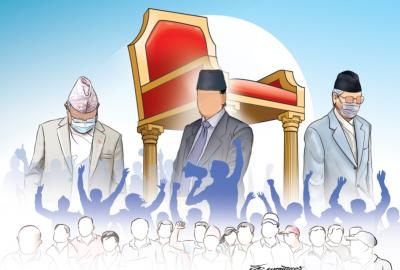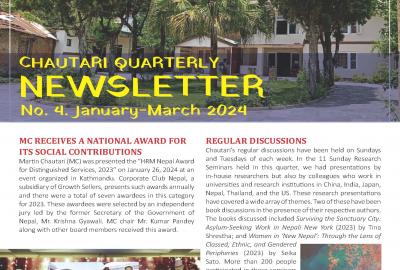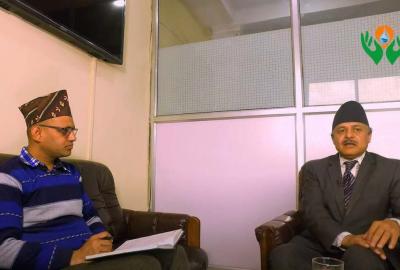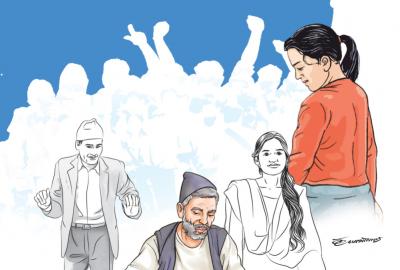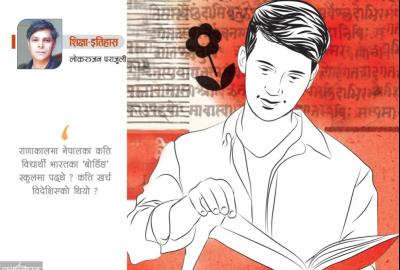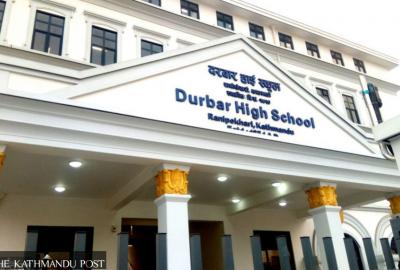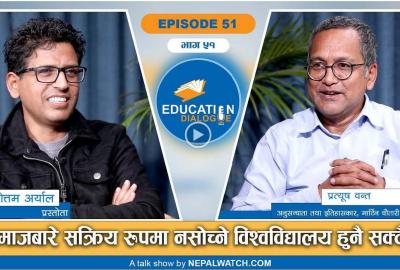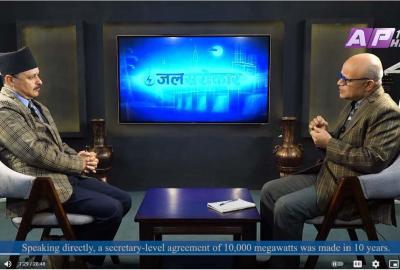‘Locating’ the Missing History Students
History students have been missing in Nepal’s oldest university, Tribhuvan Univesity (TU). Or at least that is what one or another journalist has been telling us in the recent past. On 28 July this year, Rohej Khatiwada published a long story in Naya Patrika on this subject (“Ritindai TriBiko Itihas Vibhag”). There he quoted Dr Shanker Thapa, head of the Central Department of History at TU, to tell us that no new students had enrolled in the MA programme offered by the Department in the past two years. Hence there were no students enrolled in all four semesters of the MA programme. The report mentioned that there were only two doctoral students in the department. Technically even that is not correct. Those two PhD students would have been registered at the Dean’s Office of the Faculty of Humanities and Social Sciences. Under the new dispensation that requires all PhD students at TU to do some coursework, they would have been taking classes at the Department.
But does anyone remember how long our journalist colleagues have been reporting about the missing history students at TU? Well, the answer is, for a long time. They have been doing so for a good part of the past two decades. While I don’t know who published the first report on this subject, I know for sure that there were two such reports published in 2001. One of them was written by Gunaraj Luitel, now the editor of Nagarik. He published a story with the title that started as “Itihaska kaksha khali…” in Kantipur on 15 February 2001. Since then, every year, several others have been reporting about these missing history students. Given the longevity of this news theme, it can only be that one of two things is at work here. First, our newsrooms love to repeat a crisis-framing story even when they don’t add anything new to public knowledge. Second, the same type of news has been repeated because there is in fact a real decrease in the number of students studying history at TU.
On the face of it, there is nothing wrong about this series of reporting. These reports are, for the most part, factually correct. They inform the readers about the decreasing number of students enrolled in the MA programme in history at TU, namely, in the Central Department in the University Campus in Kirtipur and in the three other TU campuses where history MA programmes are taught: Prithvi Narayan Campus (Pokhara), Post-Graudate Campus (Biratnagar) and Thakur Ram Multiple Campus (Birgunj). Beyond the numbers, however, these reports do not help us to put the issue in proper perspective. What do I mean?
Let us look at the numbers again. First, when one looks at the number of students enrolled, it is clear that the numbers have declined over the past decade and half. But there are statistics that should indicate to us that it has not been a continuous trend all these years. For instance, the number of students (154) who submitted their MA thesis in history at all four of TU’s programmes for the decade between 2056 BS and 2065 BS was significantly more than in the previous decade (76) and most likely more than in the succeeding decade (for which we don’t have complete data as of now). What this suggests to me is the cyclic nature of students getting interested in a particular subject (history or otherwise). Hence it is very likely that in the future, the number of students formally enrolled in history MA programmes in Nepali universities will go up.
Second, this decline has to be also understood in a global perspective. In the US and elsewhere, the number of students enrolled in the humanities has been going down in the most recent past. One such recent analysis for the case of the US, prepared by Benjamin Schmidt who teaches history at Northeastern University in the US, stated that the number of college degrees awarded in English, History, Languages and Philosophy (core subjects of the humanities) during the 2000s was about 7.5 per cent of all college degrees and this figure has now decreased to less than five percent. Research on the reasons for that shift in the US has not been properly done but a commentator on that report suggested that “students may be driven toward fields that they believe are worth the money.” In Nepal too, there are many speculations as to why the students are missing in MA history programmes (“no career prospects”, “attracted to other market-driven subjects”, history seen as a boring “old” discipline, etc) but no definitive studies have been done among students who are choosing subjects at the MA level or above for us to be sure about why people are choosing other subjects. Nevertheless we can be sure that the missing MA history students at TU is not a Nepal-only problem.
Third, what is almost certainly going to happen is that even when TU does not have any MA students in history, the number of PhD students in history there and elsewhere (doing research related to Nepal) will go up. Until March 2014 when my colleague Yogesh Raj and I published our The State of History Education and Research in Nepal the number of PhDs in history awarded by TU stood at 63. That was more than in political science (58), sociology and anthropology (26) and geography (12). As we discuss in that book, in the 30-year period between 1970 and 2000, 28 history PhDs were completed at TU. In the following 13 years, 35 PhDs were awarded. In the latter period, there were some years when five history PhDs were awarded in one calendar year. Over three dozen history PhD students were enrolled at TU in 2014 and some of them must have gotten their degrees by now. Last year two new doctoral students enrolled under the new dispensation as mentioned earlier. This year, three or more such students will enroll. It is also interesting to note that three Nepali students enrolled in PhD programmes in history at two American universities in the last two years alone and two of them had no prior training in history. All these data suggests that the number of Nepali students opting for history PhDs in Nepal and abroad is likely to go up even when the number of students enrolled in the history MA programme at TU remains zero.
How might we understand this situation? Part of the reason why people who have no prior experience of studying history are able to pursue it at the doctoral level is related to the fact that, as historian Sarah Maza puts it in her new book Thinking about History (2017), “history as a field of study is unusual in its lack of overarching structure or definition.” As she notes, other “fields in the humanities and social sciences are more tightly bound to canons or bodies of knowledge, to technical methods, or both.” While mastery of one or more languages and some specific technical skills are necessary, the historian’s research process itself is rather easy to figure out. As Maza notes, “once the research is done, a historian is expected to put forward a narrative and argument that any well-educated person can understand.” It is this eclecticism that makes the discipline accessible to students who have not studied it previously.
It also explains why self-trained historians and others trained at the Samsodhan Mandal by the late Nayaraj Panta have contributed enormously to our historical knowledge. This also explains why many interesting essays on, among other things, the history of Nepali print and broadcast media, the history of Nepali institutions related to higher education, and the history of various social movements in Nepal have been written by those who have no MA or PhD degrees in history. We should also recall here that some of the more popular books of contemporary Nepali history have been written by our leading journalists.
I wish that the MA programme at TU sees the enrollment of many students in the near future. Taking good courses as part of your MA training is important for the production of good researchers. But if those students continue to go missing at TU, it would still not mean that the production of historians of Nepal will have been halted as suggested by journalistic reports.
Source: http://kathmandupost.ekantipur.com/news/2018-09-29/locating-the-missing-history-students.html
